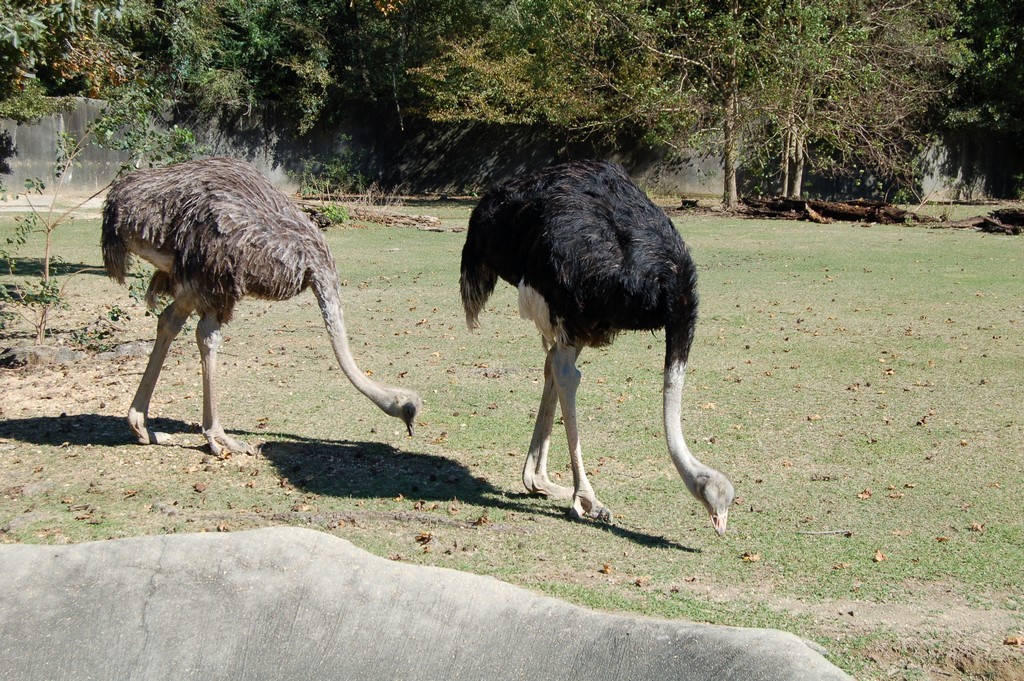Common Ostrich
A species of Ostriches, Also known as Red-necked Ostrich Scientific name : Struthio camelus Genus : Ostriches
Common Ostrich, A species of Ostriches
Also known as:
Red-necked Ostrich
Botanical name: Struthio camelus
Genus: Ostriches
Content
Description People often ask General Info
 Photo By Z28scrambler , used under CC-BY-SA-4.0 /Cropped and compressed from original
Photo By Z28scrambler , used under CC-BY-SA-4.0 /Cropped and compressed from original Description
The common Ostrich is the largest bird species in the world. This flightless bird is native to the savannas of Africa and is well-adapted to its arid habitat. The Ostrich is an omnivore. It is also known for its strong legs and powerful kicks, which it uses as a defense mechanism against predators. 
Size
1.8 - 2.5 m
Life Expectancy
40 years
Nest Placement
Ground
Feeding Habits
Common Ostrich is primarily herbivorous, consuming grasses, seeds, leaves, and succulent plants. It supplements its diet with insects and small vertebrates, employing foraging tactics to find its food. It possesses unique adaptations like a strong gizzard to grind tough plant material.
Habitat
The common Ostrich is typically found in a variety of open and semi-arid plains, including deserts, savannas, and open woodlands. These birds thrive in arid and semi-arid regions across broader geographical landscapes and do not necessarily require standing water. Known for their streamlined water economy, common Ostrich are well-adapted to their habitats, able to maximize their water utilization with efficiency comparable to small desert-adapted bird species.
Dite type
Herbivorous
People often ask
General Info
Feeding Habits
Bird food type
Distribution Area
Common ostriches formerly occupied Africa north and south of the Sahara, East Africa, Africa south of the rainforest belt, and much of Asia Minor. Today common ostriches prefer open land and are native to the savannas and Sahel of Africa, both north and south of the equatorial forest zone. In southwest Africa they inhabit the semi-desert or true desert. Farmed common ostriches in Australia have established feral populations. The Arabian ostriches in the Near and Middle East were hunted to extinction by the middle of the 20th century. Attempts to reintroduce the common ostrich into Israel have failed. Common ostriches have occasionally been seen inhabiting islands on the Dahlak Archipelago, in the Red Sea near Eritrea. Research conducted by the Birbal Sahni Institute of Palaeobotany in India found molecular evidence that ostriches lived in India 25,000 years ago. DNA tests on fossilized eggshells recovered from eight archaeological sites in the states of Rajasthan, Gujarat and Madhya Pradesh found 92% genetic similarity between the eggshells and the North African ostrich, so these could have been fairly distant relatives. 
Species Status
The wild common ostrich population has declined drastically in the last 200 years, with most surviving birds in reserves or on farms. However, its range remains very large (9,800,000 square kilometres (3,800,000 sq mi)), leading the IUCN and BirdLife International to treat it as a species of Least Concern. Of its 5 subspecies, the Arabian ostrich (S. c. syriacus) became extinct around 1966, and the North African ostrich (S. c. camelus) has declined to the point where it now is included on CITES Appendix I and some treat it as Critically Endangered. 